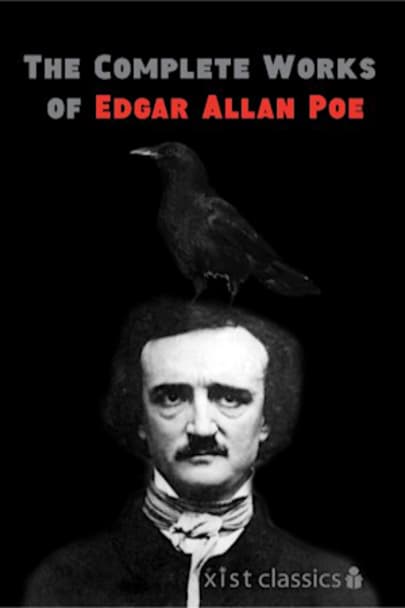The Strange and Shocking Tales and Poetry of Edgar Allan Poe in One Volume “I became insane, with long intervals of horrible sanity.” ? Edgar Allan Poe Best known for his tales of mystery and the macabre, Edgar Allan Poe was a leading writer of the American Romantic movement and has been considered the inventor of the detective genre. This complete collection of his works in a combination of five … five volumes and includes well known favorites including, The Raven, The Tell-Tale Heart and many more stories and poems. This Xist Classics edition has been professionally formatted for e-readers with a linked table of contents. This eBook also contains a bonus book club leadership guide and discussion questions. We hope you’ll share this book with your friends, neighbors and colleagues and can’t wait to hear what you have to say about it.Xist Publishing is a digital-first publisher. Xist Publishing creates books for the touchscreen generation and is dedicated to helping everyone develop a lifetime love of reading, no matter what form it takes
more



Keeping with the season (I’m writing this in October) I had to make my first recommendation Edgar Allen Poe’s “The Complete Tales & Poems”. He is a master of suspense and horror. Drawing you in and getting your heart racing with The Tell Tale Heart. If that isn’t you cup of tea then you might enjoy his more romantic works, such as Annabel Lee. Though even these works of EAP have a less than happy tone. Perhaps you just want a glimpse into this great man’s mind, and you get that with his works like “Alone” ( My personal favorite).
There is something for almost any fan of well written classics. He didn’t get his world renowned reputation for nothing.
I can’t tell you how many times I come back to read this book, and everytime I have an emotional response. His re-readability is part of what makes him great.
Great for a rainy day or snowy night. Classic tales that give me a chill every time.
Sherwood Anderson wanted a different title for his first collection of stories, Winesburg, Ohio. Anderson believed in truth in advertising and wanted to call it The Book of the Grotesque, after Poe’s 1840 collection of stories, Tales of the Grotesque and Arabesque. Of course, the publisher nixed it. But isn’t it interesting that Anderson, writing some four generations after Poe, would pick that writer and that title to pay homage to? Wasn’t there another book or another American writer who meant as much to Sherwood? No. Not. So what’s the big deal about Poe? Americans read Poe way before we should, usually in grade school. Thus we miss much of the point of Poe. We fail to appreciate that Poe was a modernist about fifty years before anyone else. Though he’s not as important as Shakespeare who was a modernist two centuries before that. But Poe matters for reasons that transcend his work by a lot. And by the way — Wow — what a decade the 1850s was. Flaubert published Madame Bovary, a work of proto-post-modernism that came from out of nowhere. And Darwin published On the Origin of Species. And Poe’s posthumous essays, including The Poetic Principle, came out. In them, he formulated a new tradition in art called Symbolism, a label we will later change to Modernism. The French went wild for Poe at this point, because they figured out he’d been a far greater literary theorist than fiction writer. Poe is the one who said that a piece of art, to be called art, must be amoral, meaning it should not adopt any particular stance or attitude toward life. It should simply show what is there. Which is not quite the same as symbolism, because symbolism is about showing us what is NOT there, what is hidden from the eye and other senses. So when Poe is writing a story, he’s not really writing about what he appears to be writing about. On the other hand, Poe also comes out of an older tradition, a Gothic tradition, which is a melodramatic tradition. Melodrama also cares a great deal about the unseen and unseeable and the unrecognized aspects of life, particular the hidden forces working behind the scenes that are actually in control of our lives and causing much of our suffering. Often, these hidden forces can only be detected by the damage they are causing. Two kinds of major harm they cause are hysteria and despair. So when we encounter hysterical and despairing people i.e. all of Poe’s characters, we know we are witnessing the effects of vast hidden forces that are tearing their worlds apart. So that’s why we should not forget Poe.
Edgar Allan Poe sets the standard for horror authors. His stories are wonderfully creepy and atmospheric. Intelligent horror rather than mindless gore buffets you get from most modern horror authors.
Enthralling, have read over and over.